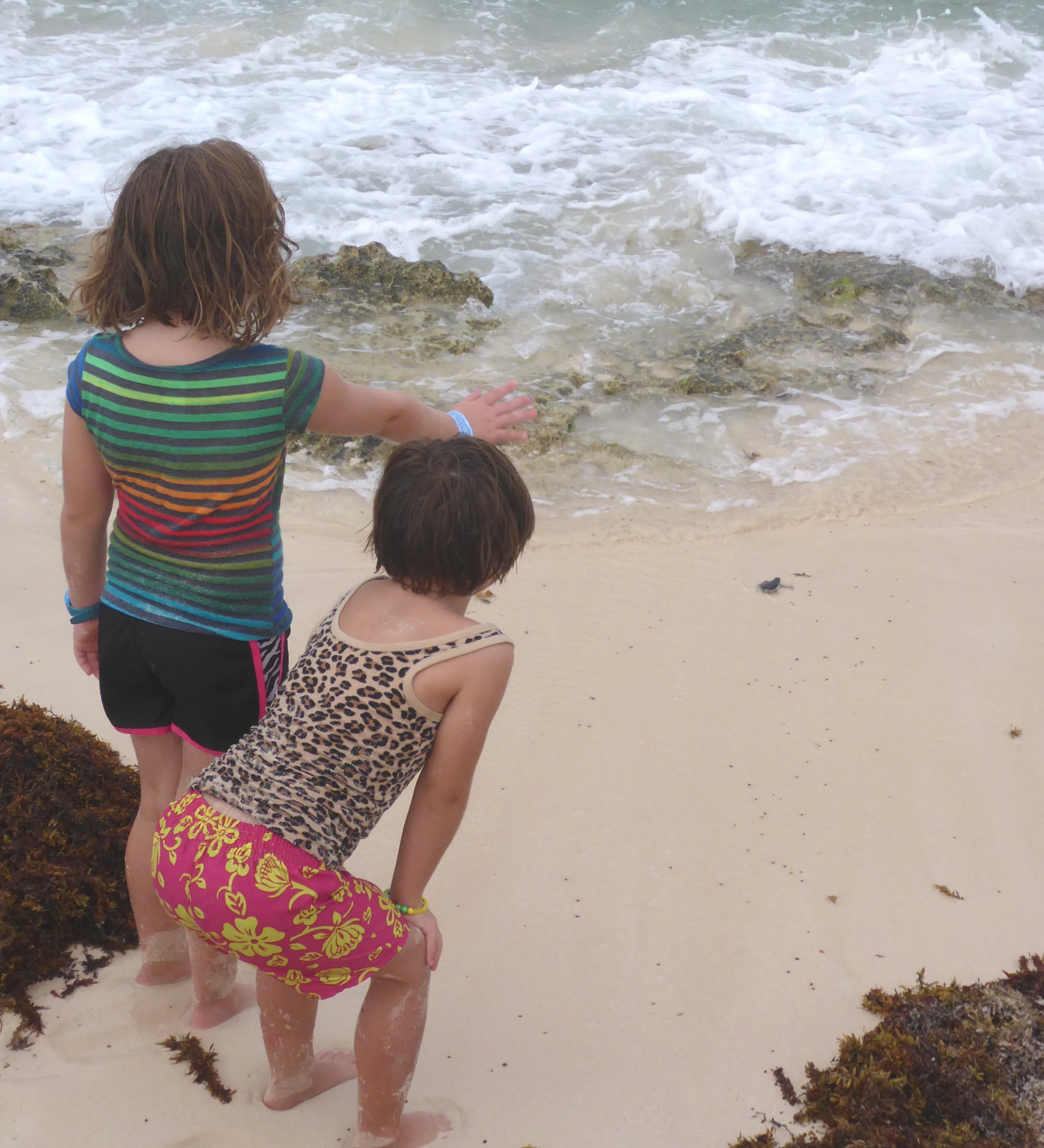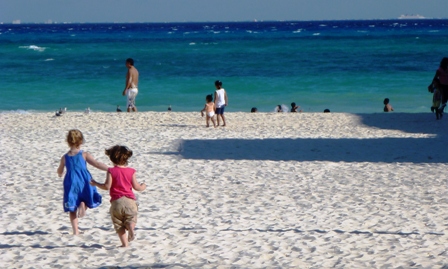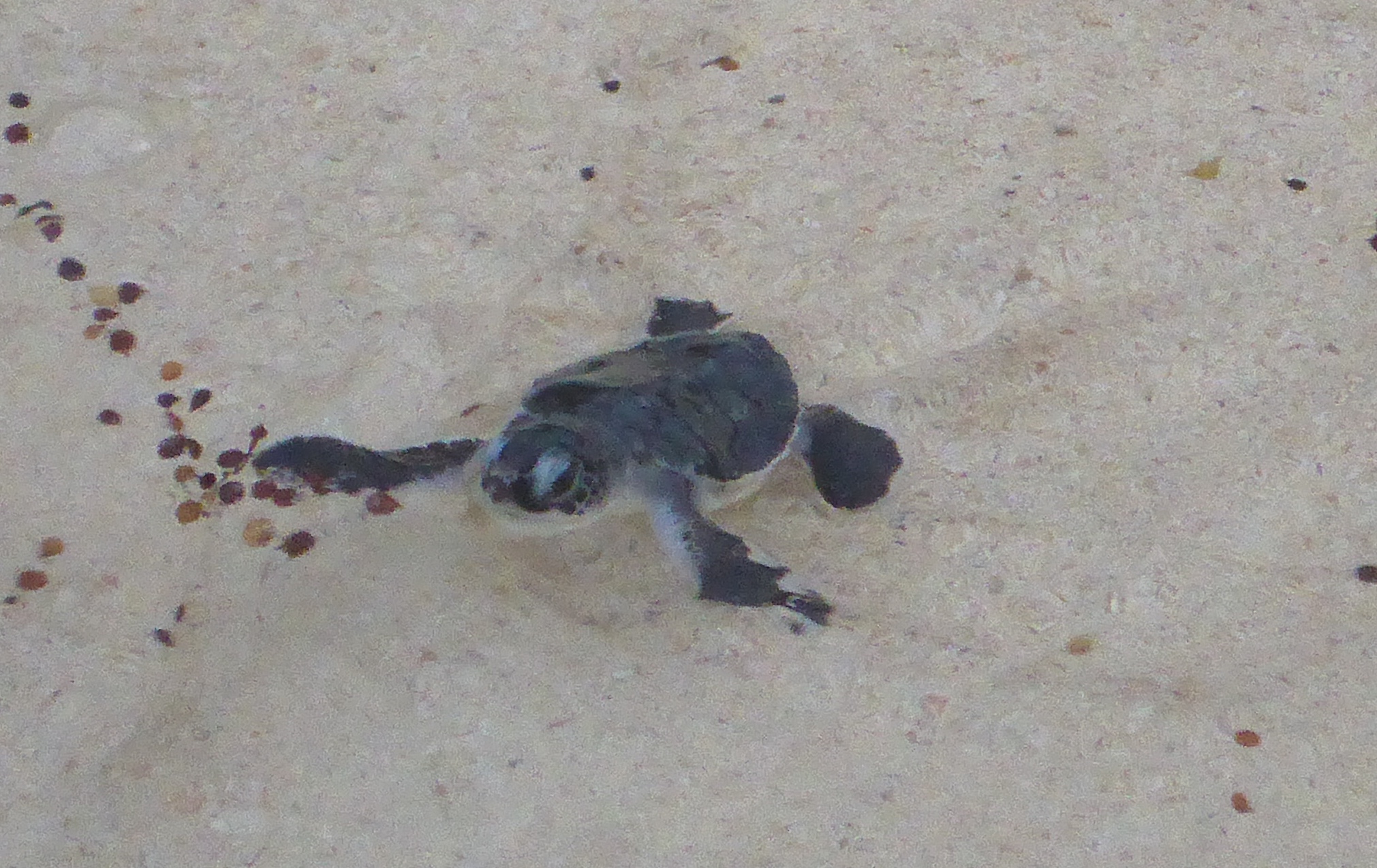Saving Sea Turtles At Last
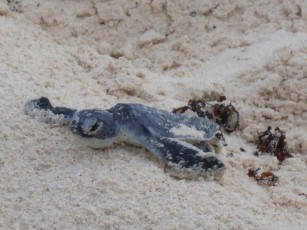
I have wanted to volunteer to work with turtles for as long as I can remember, nesting, rescue, hatchlings I don’t really care as long as there are turtles. Last year when I was in Mexico by myself I almost made it but my ride fell through. I was so disappointed I decided to wait until we moved and the kids could do it with me. That day finally came yesterday.
All sea turtles are considered endangered species. Only two species nest here on Cozumel, Green and Loggerhead turtles. It is illegal to harass or even touch these animals, but working with the Ecologia department gives us a rare opportunity to get close and even handle them.
From May to September staff and volunteers worked during the night driving along the Eastern side of the island from 9pm to 5am every night with a red light that wouldn’t bother the turtles coming out of the ocean to dig their nests and lay their eggs. Nests are then marked with a wooden stake that has the number and the date, and the information is recorded so if the stake is lost they will still be able to find the location.
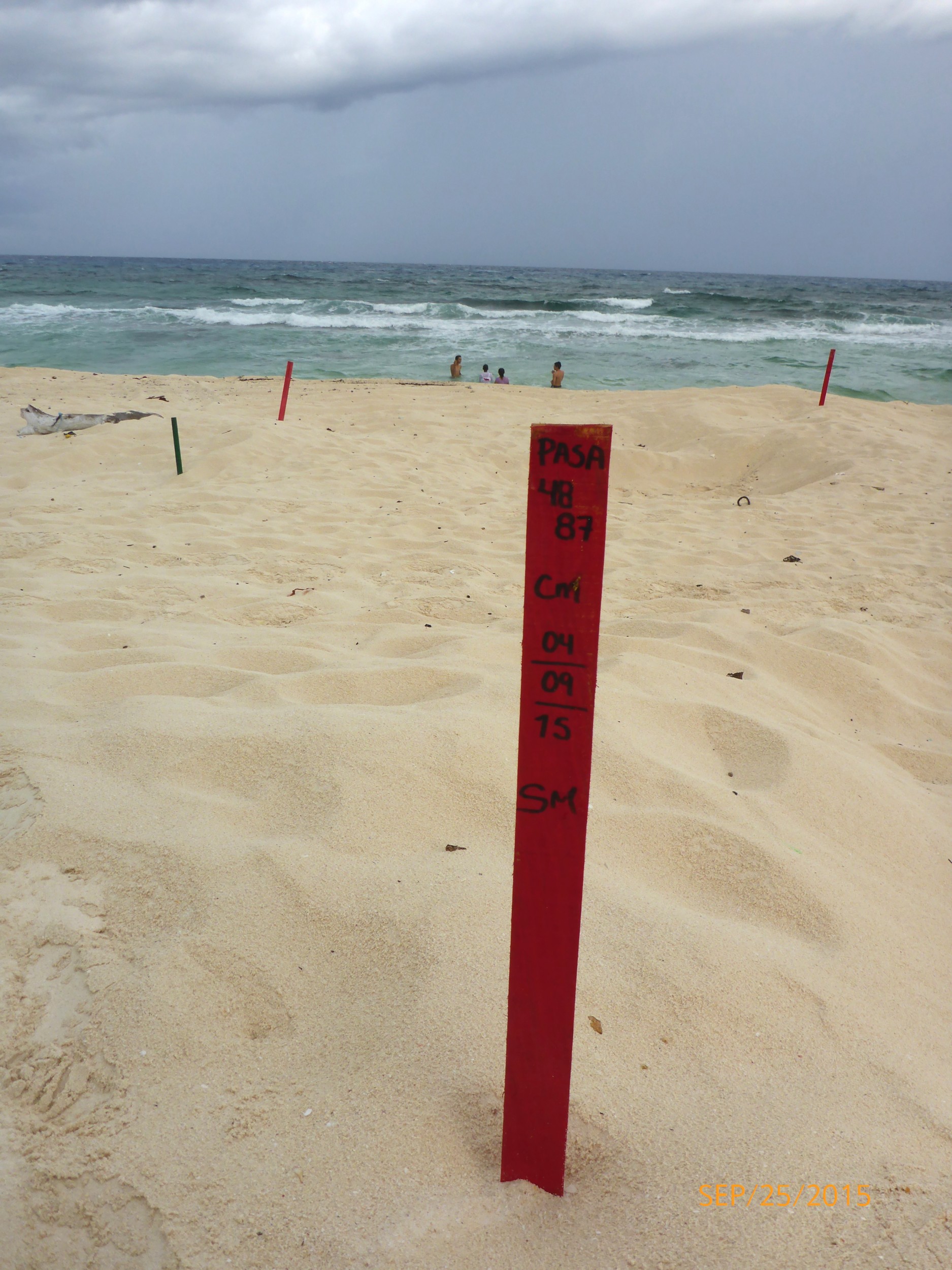
They do this so they can guard the nest from poachers and predators, but also so they can find it again 55-60 days later when it should be hatching. The timing depends on climate and species, and the temperature of the nest determines the gender; more than 80 degrees the babies will be females, below 70 they are males.
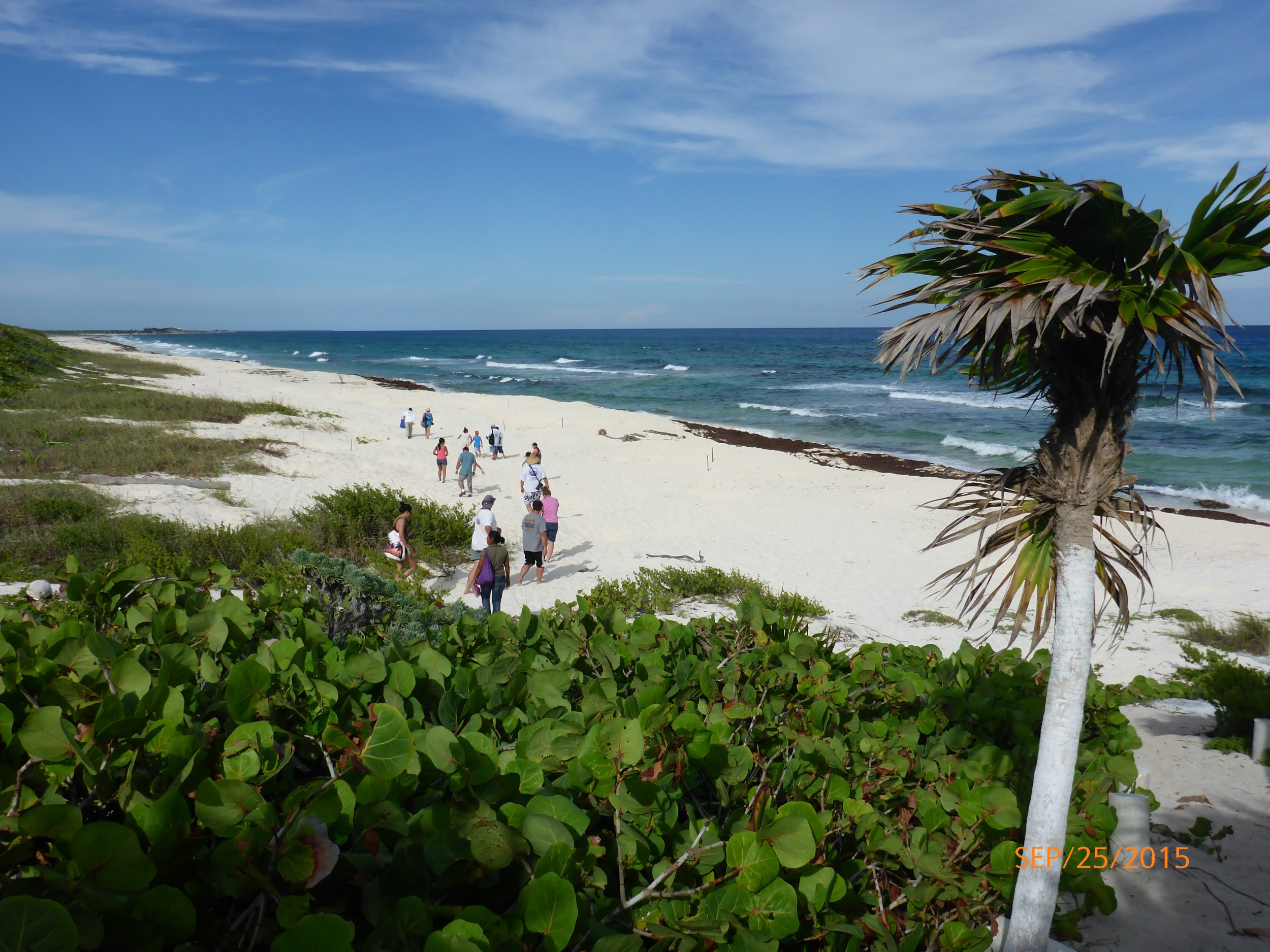
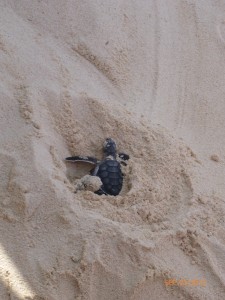
Most of the baby turtles will emerge and go into the sea naturally on their own. What we came to do is clean the nest, sometimes referred to as “Search and Rescue.” The female digs down approximately 1 meter(3 feet) to lay her eggs. It takes the baby turtles 3 days to dig their way to the surface after they hatch, and the last few stragglers may not make it up. We dig down to find these babies and help them get out. Some are alive, some are dead, and I warned the girls of this before we started.
It sounded easy enough. Come dig in the sand, something Rory excels at, and find cute little baby turtles. Of course it’s a lot more work than that. Oddly enough what really has me aching the day after is the sandy beach-it’s soft and you sink probably 6 inches with each step so my leg and gluteus muscles really had to work a lot more than usual. I walked slowly, feeling my muscles work in unfamiliar ways as I watched my kids bounding along easily peeking to see what others were uncovering.
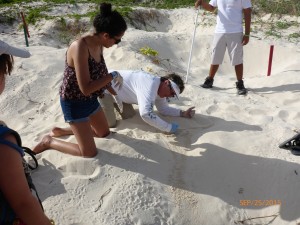
One of the staff finds each volunteer a nest that should be hatched based on the date on the stake. The stake is directly over the nest so you pull it out and poke a little with your fingers. The emerging turtles aerate the sand as they come up so where the sand is soft and gives that’s the nest. At first it was hard to tell the difference, but the deeper we got the more evident it was.
We were shown to dig straight down, to keep straight walls so they wouldn’t collapse, and it all has to be done by hand for the safety of the turtles that might be left. Normally my girls dig like wild animals, sand flying, but this takes more care and control. They did really well and we quickly found a live baby turtle maybe a foot down. He just emerged from the sand at the side of our hole like magic and June plucked him out to get a better look at his sandy face. It was beautiful, and worth the wait.
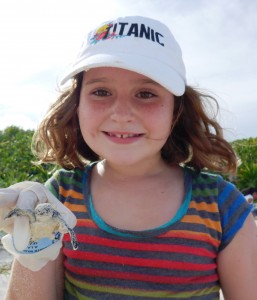
After a minute we surrendered our new friend to the yellow 5 gallon bucket when the other hatchlings were being contained until the release that evening. We started digging again, lying flat in the sand and reaching one arm into the hole to scoop out a handful at a time. First Rory and then June couldn’t reach the bottom anymore, so it was up to me. I gave up wearing a sun hat as the brim kept hitting the sand when I stuck my face in the hole, stretching to reach the bottom. As I reached the end of my arm length the walls couldn’t handle my weight leaning in on them and we had a few cave ins. We weren’t finding anything, the sand kept re-burying our hole, and my shoulder was aching.
What do you do when you can’t find the nest at the bottom of your hole? We were up on a dune where additional sand had been added after the turtle mom buried the eggs and it was deeper than most. Rory said maybe we should try a different place, but I pointed out that we couldn’t just abandon this nest and we hadn’t found the eggs yet.
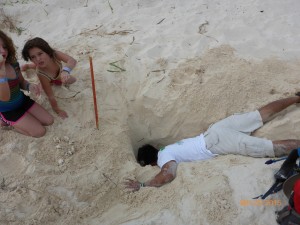
June brought a staff member over, a little Mexican guy who probably couldn’t reach any further than I could but had more experience. He showed us the trick: when you can’t dig the hole any deeper you have to dig a trench for yourself to lay in to get down lower. He scooped out handfuls and we pulled as much sand away from the edges as we could to help avoid more collapses. He groaned and laughed, telling me, “Ugh, I did abs yesterday!” I admit I felt a little better knowing that this hurt him as much as it hurt me. People are not made to dig with their hands for extended periods.
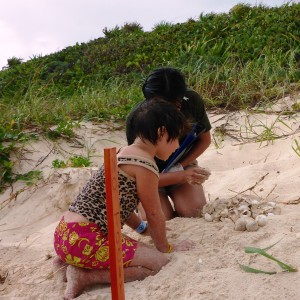
It rained on us a little as he started bringing up eggs, keeping everyone cool. Rory helped the woman who came over to count the shells. He also brought out one small undeveloped turtle that had died. Just like that, we were done cleaning our first turtle nest. The girls immediately wanted another, so he took us further down the soft, muscle building beach, me following slowly behind with our backpacks. This was where I thought about people who run on sandy beaches because it’s supposed to be more of a challenge….I was challenged enough just walking.
I was impressed when the girls took charge of the second nest. We knew what to do now, and they took turns scooping sand out of the hole and pushing it back from the edges. This one wasn’t as deep and June soon found what she called the “egg pot” (like the jackpot.) She pulled out shells, lots of whole eggs that hadn’t hatched and I hardly had to dig at all this time.
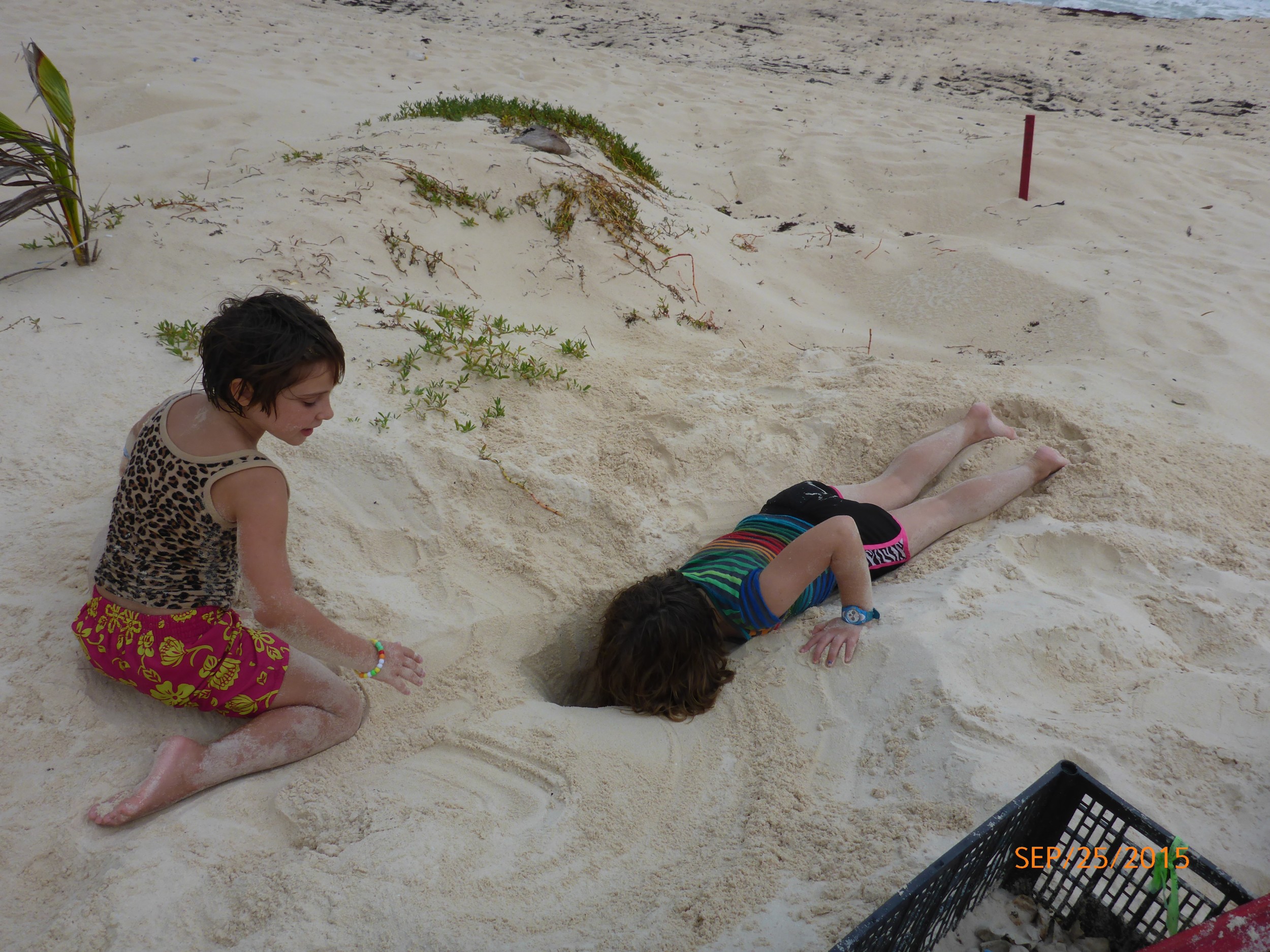
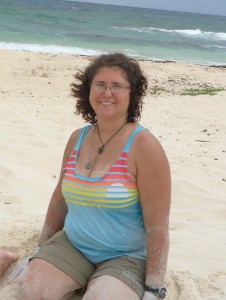
I think they could have finished by themselves but suddenly I realized that there was a crowd gathered up the beach. It was time for the turtles that had been found to be released, so I handed Rory the camera and told them to run, I’d finish the nest. There were no turtles left behind in this one, just egg shells and eggs like leathery ping pong balls.
Our one baby had come early and it was apparently the only one we were going to find today, but others had more luck and there were dozens of babies ready to make the run for the water. The live turtles are released into the ocean at the end of the work period and guarded so no crabs, birds or other animals get them before they make it to the water. A barrier was put up so no one would get in the way and the crowd gave a collective “Awwwww!” as tiny flippers hurled little grey bodies over the sand, across the Sargasso seaweed that had washed up and into the crashing waves. It seemed such a violent place for the vulnerable babies, it was hard to let them go. June and Rory stepped into the water, wanting to help but I called them back. They have to make it on their own, we’ve helped them all we can for today.
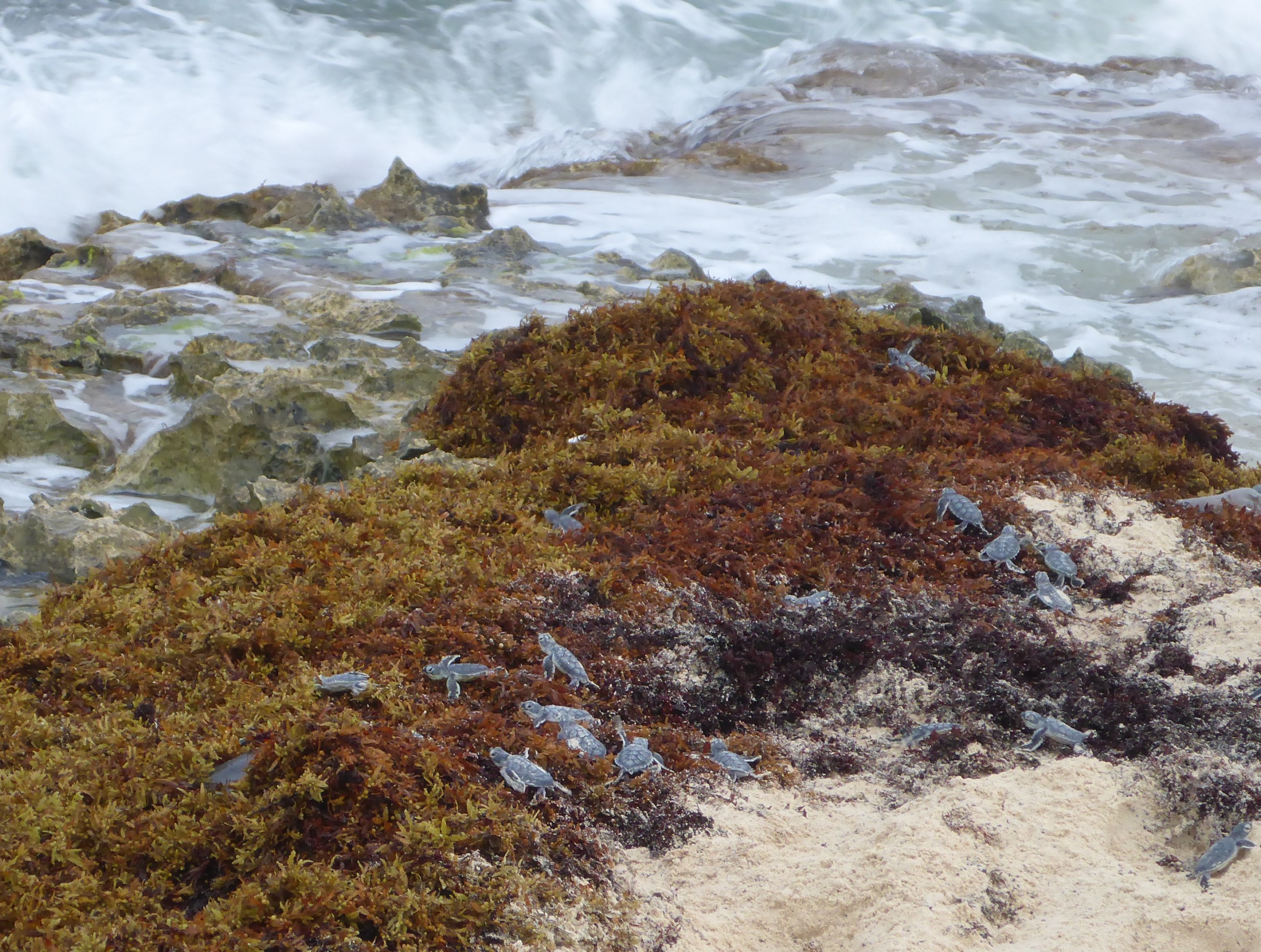
Once in the water the baby turtles are on their own. They will spend the first 5 years of their lives in the open ocean, and much of junvenile sea turtle’s lives is still a mystery. It will be 14 years for the Loggerhead and 30 years for the Green turtles before they will return to the same beaches in Cozumel to lay their own eggs.
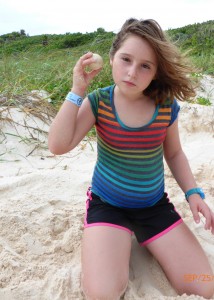
Looking up and down the sand there were stakes marking more nests that would need to be dug up another day and holes from today’s efforts all over. People were leaving after the release, but I knew the staff would have a lot more work ahead of them. All of the eggs shells and unhatched eggs would be counted and collected, then taken across the highway to keep predators away from the remaining nests. There had been at least 20 people digging, and if we all did two nests that was 40 nests to be cleaned up before the job was complete. We offered to help pick up shells but our staff friend explained that they needed to make sure it all got recorded first and I could see that children might not be the best helpers, at least not on our first day.
He asked us if we liked seeing the turtles go into the ocean, and of course we all said that we did. Then he asked which is better, just coming to see the release, which some people did, or digging the nests out and then watching the release. I was proud that my girls didn’t hesitate for a second to say that being there to help dig was much better than just showing up at the end.
On the drive home Rory got a little upset that with all the digging we did we only found one turtle. I told her a story that is one of my favorites:
A man is walking on a beach and sees that there are hundreds, maybe thousands of star fish washed up onto the sand by the large waves. Stuck there they are going to die. Coming toward him down the beach he sees a boy, and every few steps the boy picks up a star fish and flings it out into the sea.
When the man gets close he asks the boy, “Why are you doing that? There are too many for you to save them all so why bother? What you’re doing doesn’t matter.”
The boy doesn’t answer, just picks up another star fish and throws it out into the ocean. Then he looks at the man and says “It matters to that one.”
It’s important to know that what we do matters, even if it’s small. It has an impact, whether it’s a good one or a bad one, and it all matters. Rory understood, and when we got home she told the story to her dad (he was stuck working but we’ll take him next time.)
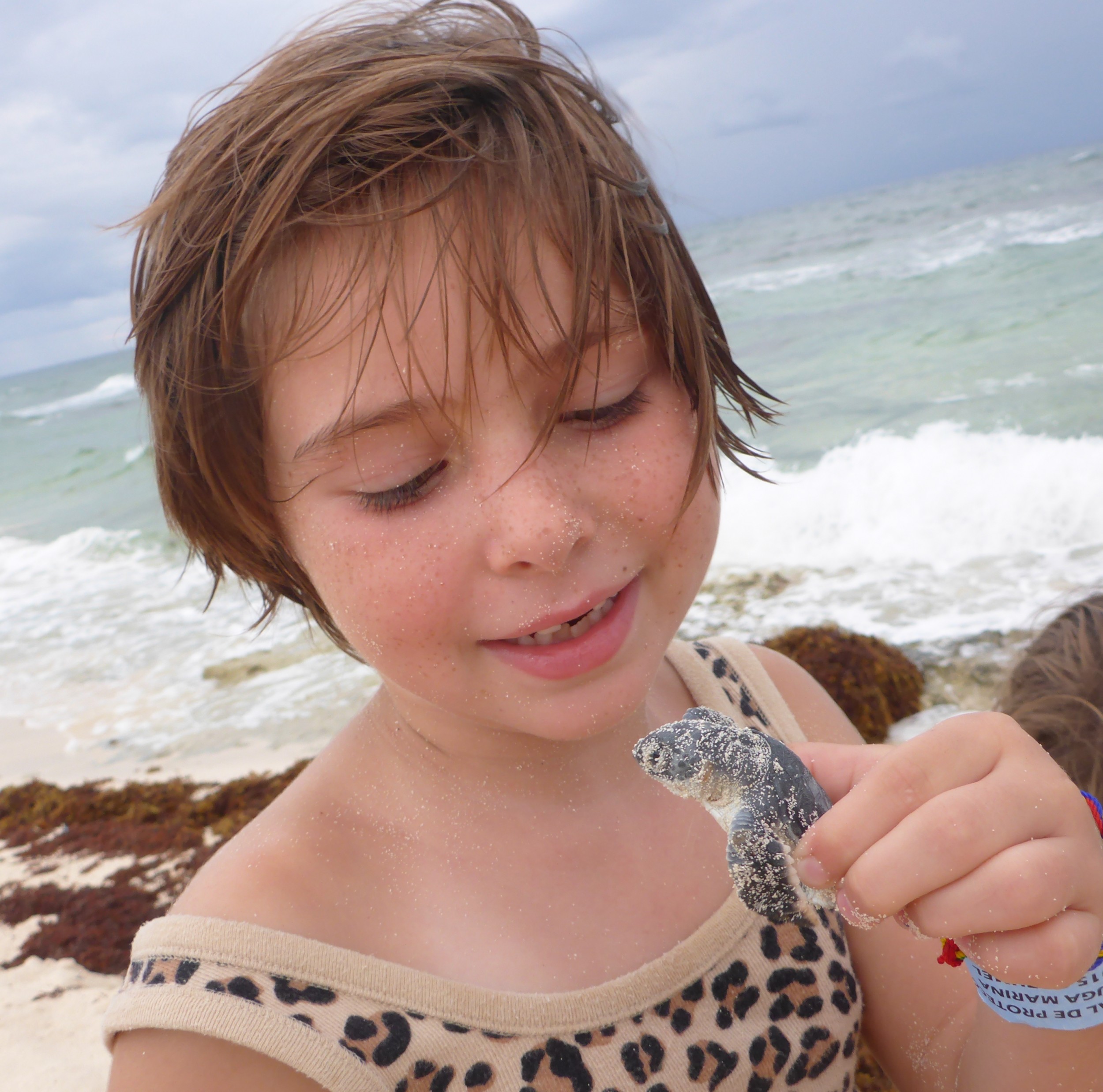
Want to come along?
If you want to come help the turtles yourself when you’re in Cozumel the Ecologia department does this Monday through Saturday every week in nesting season. A donation of $25 is required and the money goes directly to help fund the department. They’ll give you a wristband so you can access the protected beach. Locals can go for free as it is part of their local culture, but some tours of the same kind of experience cost a lot more so be careful who you go with.
You need to have transportation because the turtles nest on the less developed “wild side” on the East of the island. If I’m going I’d be glad to take you along, send me an email. The turtle trailer is the starting point located on the south end of San Martin beach. A brief tutorial is required so you know how to dig and sometimes you have to follow them to another beach if that’s where you are needed.
Before I always saw the adorable baby turtles popping out of the sand to make the charmingly frantic run to the ocean where they disappeared into the lapping waves. That’s what we all want to see but in reality it’s a lot harder than that, both for the people who protect them and the turtles themselves. It’s a dangerous world for them and that’s partially our fault, having hunted them and drowned them in nets until they are in danger of disappearing completely. The least we can do is spend a little time slogging through the sand watching over them, and now that we know how it all works I think the Ecologica department will be seeing a lot more of us.
